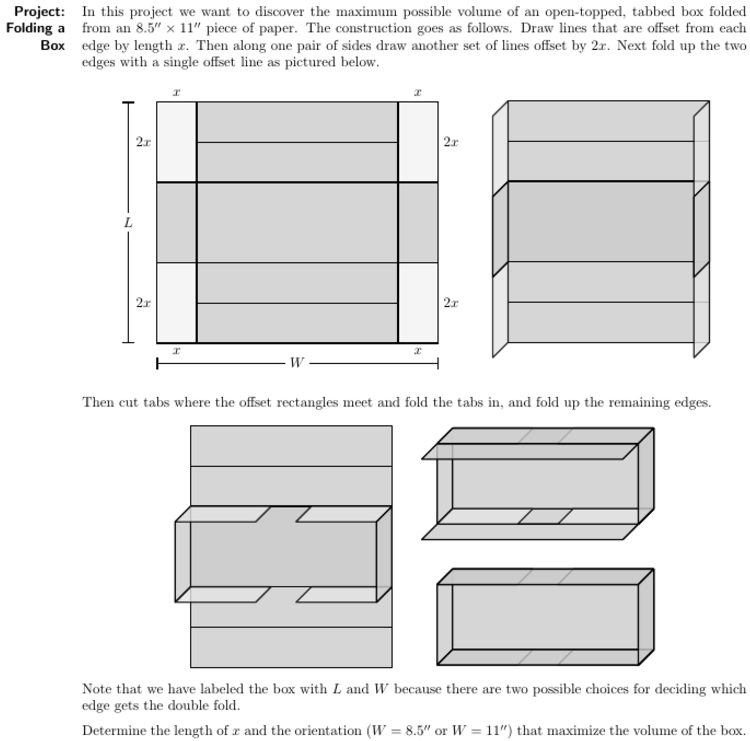In my previous post I shared some of my favorite features of the Desmos Graphing Calculator. In this post I want to share how Desmos is changing the way math is taught and experienced in the college classroom.
Math for our day
When our students leave college we want them to be fully equipped to handle the math that will come their way. For some students (such as STEM majors) the demands are higher because of the larger role that data and models will play in their careers. For other students the bar is set lower, but there are some common skills that all college graduates should have.
- Students should have basic number sense along with the confidence to dive in and try problems.
- Students should be able to accurately use numbers (including units and other appropriate vocabulary) to describe situations and problems.
- Students should be critical thinkers and have at least moderate capabilities in the areas of consumer math and statistics.
If a college graduate hasn’t obtained those skills by the time they graduate, then both the school and that student have failed in a key area. This low bar applies regardless of the major.
In his recent article (All the mathematical methods I learned in my university math degree became obsolete in my lifetime) Keith Devlin describes the math skills needed for today’s students in contrast to the skills needed 30 years ago. The ability to carry out procedures and computations is no longer the focus because computers can easily do it for us. Instead we focus more on conceptual understanding, exploiting the tools to solve problems, and creating more meaningful discussions of results. This post will lay out some specific examples to show how math teaching is changing.
The process of doing practical math
The solution to a math problem typically has three components.
- Step 1: The Setup: This is the planning step. We take time to read and comprehend a problem and then translate the problem into a computation to perform or an algebraic expression to solve. Often we draw a picture to clarify the question or introduce variables for unknown quantities. Sometimes we will break a bigger problem into several sub-problems. By the end of this step we have transformed a paragraph of words into concrete math symbols and equations. (Pólya makes this 2 steps.)
- Step 2: Solving: In this step we find the numerical answer to the question. Usually this involves some sort of algebraic manipulation and/or arithmetic calculation. Often we complete a procedure of steps that we have memorized.
- Step 3: Interpreting: The final part is where we write up the solution. A good interpretation will include units and an explanation of the conclusions reached along with any other information that was requested.
All three steps are critical to doing meaningful math. In the past we devoted most of our time and energy to Step 2 while fitting in the other steps when time permitted. Today however Step 2 is the one step that computers can do nearly instantaneously for us. Keith Devlin described the focus of math today:
What is required today is a sufficiently deep understanding of all those procedures, and the underlying concepts they are built on, in order to know when, and how, to use those digitally-implemented tools effectively, productively, and safely.
Desmos makes Step 2 easy and allows us to focus on Steps 1 and 3. Math class is much more meaningful and applicable when we can devote time to the setup and interpretation steps. I can’t emphasize what a difference using Desmos has made in helping us to move our focus to setting up problems and interpreting them.
What tools fit best?
In high school I carried my trusty TI-85 graphing calculator around in my pocket everywhere I went. It was an amazing tool that offered me some great opportunities to explore math questions. Now, twenty years later, TI calculators have nearly the same set of features and the cost hasn’t gone down. Free mobile app calculators can easily outperform today’s TI calculators. TI hasn’t improved the calculators because standardized tests won’t allow more powerful calculators. TI has a captive audience of students who don’t have a choice to use more modern tools. College is not the place to perpetuate outdated and expensive tools.

WolframAlpha is a computational search engine. It will solve equations, plot graphs, and carry out numeric or algebraic computations. It will even let you search terms like “population of China” or “crime in Salt Lake City” and give nice graphs of historical data. It’s an amazing tool that I use at least once per week. It does have some downsides as well. You have to pay money to get access to any of the steps in the solving process. It can also be difficult to get it to understand what question you are asking. (It used to execute Mathematica code, so you could always look up the proper syntax.) My impression is that WolframAlpha often comes across as this magical black box, where you type in a question and get out an answer. Instead of empowering students it sometimes creates a distance between the math and the student.
The Desmos graphing calculator provides most of the same magic as WolframAlpha, but it does so in a much more interactive and empowering way. Students plot their curves in real-time and discover the solutions for themselves. I find Desmos to be empowering and rewarding in a way that a magical, black-box, correct-answer-generator could never be.
I wrote previously about my favorite Desmos features, so I won’t repeat myself here.
How is Desmos used in a college class?
Many of our classes are built to be non-calculator classes. Perhaps a calculator is used for homework or to investigate ideas during class, while the quizzes and exams use no calculator. On such a test a calculator-ready answer is a good final answer. In these classes Desmos plays a small, but not insignificant, role in helping students explore and learn the material. We might use a few select Desmos activities, but the typical college schedule doesn’t allow for as much exploration as a high school course might. Example: Limits of Complex Functions from my Complex Analysis class.
I have used Desmos to partially flip my calculus class. Students work through preview activities prior to coming to class so that we can focus more class time on practicing. The Desmos activity builder lets me make a custom assignment for any occasion. Example: 1.5 Interpreting Derivatives a preview assignment from my Calculus class.
Desmos even lets students take on the role of teacher. I sometimes assign my students in my upper level courses to create a lesson using the Desmos Activity Builder to teach a principle from the course. Example: Assignment Prompt from my abstract algebra class
Our biggest use of Desmos is in the two courses that we have structured entirely around Desmos. I will describe those courses in some detail.
Intro to College Math
At Nevada State College all of the non-STEM students complete our Intro to College Math course. Just a few years ago that course spent 80% of its time on step 2. Students consistently rated the course poorly and felt that the material was irrelevant. They were correct in their assessment. It was time to make a change. We knew that most of these students would have only a single college level math course and that many had never had a positive math experience in their entire education up to that point. We redesigned the course from the ground up with the goal of giving them one good math experience.
- If we couldn’t answer the question “When am I ever gonna use this?” then the topic didn’t belong in our course.
- If they could use the tool in the real world, then they could use the tool in the course. (They could use a calculator or even WolframAlpha, but not their friend.)
- Focus on interpretation and communication of ideas. Let a Desmos or another calculator do the work that computers are good at.
- Group work and communication play a big role; each day students turn in a group writeup of their solutions for the day.
- The class culminated in a project that required a portfolio and video presentation.
The course covers three topics.
- Probability and Statistics Topics include basic probability calculations, dependent and independent variables, conditional probability, expected value, basic statistics, normal curve calculations, and fraud detection.
- Consumer Math We might cover a topic like a mortgages and interest calculations during class, while the homework asks students to go online to look up homes 3 homes they might like to buy and then go use an online mortgage calculator to compute costs. Students would type up a neat report along with their recommendations on which home to buy. Other topics included credit, inflation, and other financing.
- Algebra and Modeling Topics included the algebra of functions, mastering parent function graphs, function transformations, curve fitting, and optimization.
A sample final project prompt is below.

Note that this question is a calculus level question that we are able to tackle in an introductory level course because of the modeling power offered by Desmos. We could never cover so many topics in a reasonable manner without having Desmos to rely on. Remember the typical student in this course is likely to have a strong math aversion, but we were able to expand the content and expectations in the course while increasing student satisfaction.
Elementary Algebra
As part of our efforts to help students get through their college level math courses as early as possible we built a 1-credit remedial Elementary Algebra course on top of our 3-credit Intro to College Math course (essentially replacing a 3-credit remedial course that took an extra semester with a 1-credit remedial course taken concurrently with a college level course). This course has 50% of the grade taken from EdReady (an online adaptive learning program that the state of Nevada Higher Ed system invested in, that takes place outside of class time) and 50% of the grade from completion of Desmos activities. The class meets every Friday in a computer lab so that all students are able to complete the activities on a desktop computer during class. Read a summary post on this course and its activities here.
The Future
Desmos offers all the advantages of a traditional calculator with very few downsides. Desmos is an ideal tool for the college classroom. Few of us carry a graphing calculator with us wherever we go, but Desmos is only a few clicks away. In my past six semesters I have not encountered a single college student who doesn’t have access to a laptop, tablet, or smart phone (though these devices could be checked out from the library if needed).
The focus of math education is changing to a more productive, applicable math. Strong computational skills and number sense will always important, but if you have to choose between a citizen who can interpret and evaluate data and models and a citizen who can calculate accurately and quickly, then you have an easy choice. I believe Desmos is the tool to help us make math meaningful and useful to our students and their future.


